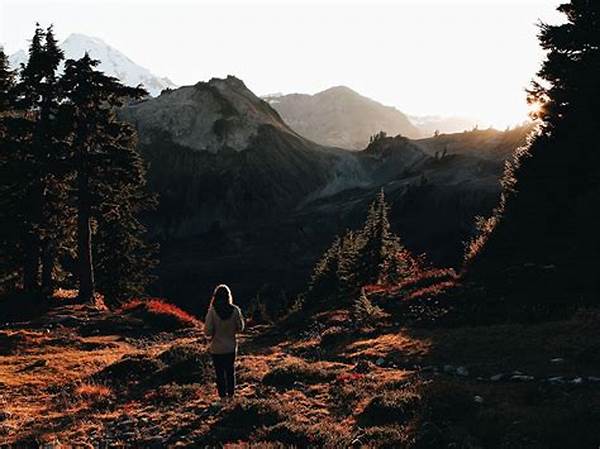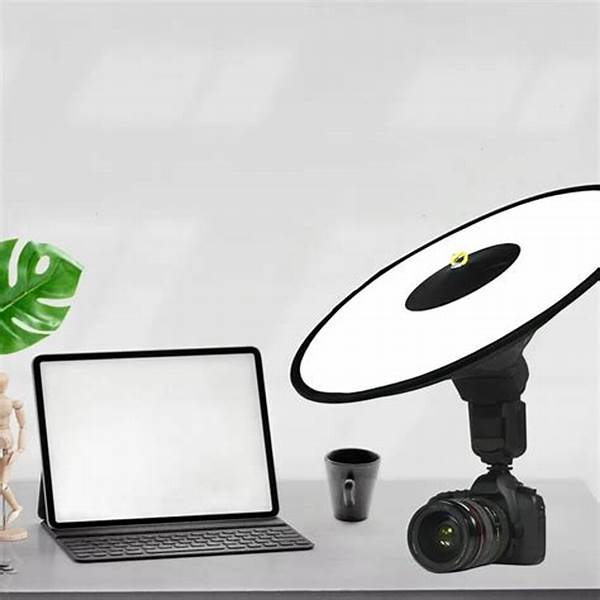Hey there, fellow photo enthusiasts! If you’re like me, your camera is probably one of your most cherished travel companions. There’s something absolutely magical about capturing the untamed beauty of wildlife through your lens. But how do we take it to the next level? Let’s talk about creating depth in wildlife photography. This gives your photos that extra pizzazz and makes viewers feel like they can just step into the scene.
Read Now : Photo Aesthetics Through Effective Framing
Understanding the Basics of Depth in Photography
Creating depth in wildlife photography is crucial for transforming flat, two-dimensional images into immersive, three-dimensional artworks. Imagine looking at a picture where the lion seems to pop right out of the grasslands, almost like you can hear its roar. That’s the magic of depth! To craft such images, you must skillfully use elements like foreground, middle ground, and background. Incorporating layers within your shot not only adds interest but guides the viewer’s eye deeper into the photograph. By playing with angles, natural lighting, and focus, you can create photos that resonate with emotion and movement. Remember, this isn’t just about capturing an animal—it’s about creating a story, allowing the viewer to experience the environment just as much as the animal itself. And don’t sweat if it feels challenging at first! With practice and a keen eye for detail, you’ll soon master the art of creating depth in your wildlife photography.
Techniques for Enhancing Depth
1. Utilize Foreground Elements: Incorporate objects or foliage in front to enhance depth.
2. Play with Perspective: Change your shooting angle to add dynamic layers.
3. Use the Rule of Thirds: It’s not just for composition; it adds depth too.
4. Experiment with Aperture: A wider aperture can help blur backgrounds, enhancing depth.
5. Vary Your Angles: Low-angle shots can provide a unique point of view and enhance depth.
Creating depth in wildlife photography isn’t just about snapping pictures; it’s about invoking a sense of being there, serving some serious drama with each shot.
Read Now : Watermark Photos Using Free Software
Playing with Natural Light and Shadows
Capturing the essence of wildlife involves more than just getting the animal in the frame; it’s about creating depth in wildlife photography by using natural light and shadows effectively. The play of light and shadow can add astonishing dimensions to your photos. When the golden hour strikes, shadows stretch long, casting dramatic silhouettes and providing you the perfect tools to enhance depth. Don’t underestimate the power of a well-shadowed spot—it can highlight details and textures that would otherwise remain unnoticed. The trick is patience and observation. Wait for the light to hit just right, and watch as the scene transforms from ordinary to breathtaking. Remember, a good wildlife photograph paints a picture of the environment along with its inhabitants. By focusing on the interplay of light and shadows, you can create stunning, multi-layered images that draw viewers in and hold their gaze.
Gear You Need for Creating Depth
Creating depth in wildlife photography isn’t solely reliant on your skills alone; having the right gear can make a world of difference. Balancing lenses, filters, and stabilizers allows for sharper, more impactful photos.
Get Out and Shoot!
So, you’re sold on the idea of creating depth in wildlife photography, but now what? Step outside your comfort zone and into the wild (or a local zoo if you can’t travel far). Start experimenting with angles and settings, and don’t be afraid to mess up a shot or two. After all, every missed shot teaches you something new. The idea is to capture scenes that evoke stories and emotions, making people feel something when they look at your work. Try photographing animals in different settings and from various perspectives. Focus on the environment as much as on the animal itself; this often adds layers and context crucial for depth. Remember, the camera is just a tool; it’s your creativity and patience that crafts the masterpiece. Get snapping, and soon you’ll find yourself creating depth in wildlife photography like a pro!
The Creative Process
Creating depth in wildlife photography isn’t just about technicalities—it’s about expressing your unique perspective. Imagine you’re out in the wild, surrounded by the sounds of nature, camera in hand, heart beating with excitement. Every click of the shutter is a moment captured, a memory preserved. It’s not just about pictures; it’s about storytelling. You’re crafting a narrative with each shot, communicating an unspoken connection between the subject and the environment. It’s this creative process that brings a touch of magic to your work. Finding new angles, playing with light, tweaking settings—it’s all part of a broader artistic journey. So let your creativity flow, and don’t be afraid to make mistakes. Every error is a learning experience, pushing you closer to mastering the art of creating depth in wildlife photography.
Putting It All Together
In a nutshell, creating depth in wildlife photography takes a mix of technical skills, creativity, and the right gear. From playing with angles and light to choosing suitable lenses and composition techniques, every element contributes to the final masterpiece. It’s a process of trial and error, continual learning, and adaptation. Remember to have fun along the way! Photography is as much about the journey as the destination. As you explore and grow, you’ll begin to notice the world’s nuances—and your photos will reflect that newfound depth. Whether you’re capturing the king of the jungle or a humble bird, the aim is to bring the wild within arm’s reach of your viewers. So grab your gear, venture out, and start creating depth in wildlife photography. Happy shooting!



